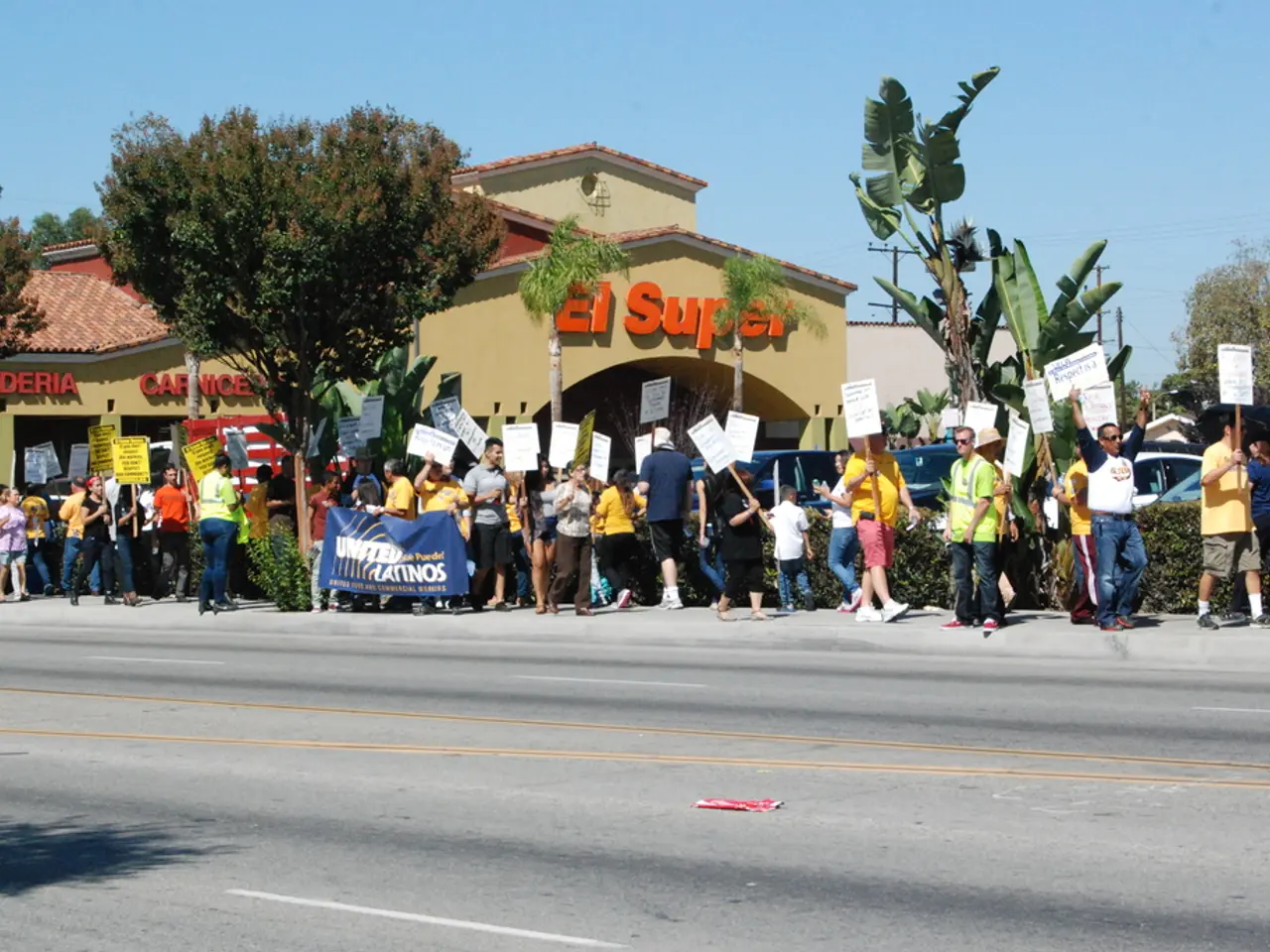Commission Regarding Boundary Adjustments and the Northern Ireland Dilemma
The Legacy of the Boundary Commission: Shaping Northern Ireland's Borders and Politics
The Boundary Commission, officially known as the Irish Boundary Commission, was established in 1924 as part of Treaty negotiations following the Anglo-Irish War. Its role was to reassess the borders between Northern Ireland and the Irish Free State following the 1921 Anglo-Irish Treaty, with the aim of addressing the issue of the Irish border and the partition of Ireland.
The Commission aimed to ease tensions and create a more stable environment in the region by delimiting the boundary to reflect the wishes of the inhabitants, considering economic and geographic conditions. The Commission met in 1924–25 and was composed of one member each from the Irish Free State, Northern Ireland, and a London-appointed chairperson.
However, the Northern Ireland government refused to cooperate, and was effectively represented by a Belfast newspaper editor appointed by the British government. Irish nationalists expected the commission to transfer significant nationalist-majority border areas to the Free State, anticipating that the remaining Northern Ireland would become economically nonviable and possibly dissolve over time.
Contrary to these expectations, the commission’s final report recommended only minor territorial adjustments in both directions, maintaining the viability of Northern Ireland. The report was leaked in 1925, provoking protests from both nationalist and unionist communities. To avoid further conflict, the British, Free State, and Northern Ireland governments agreed to suppress the report and confirmed the existing border intact as part of a broader political and financial agreement ratified by all three parliaments in December 1925.
The Boundary Commission’s failure to significantly alter the border entrenched partition, shaping Northern Ireland's future as a distinct entity within the United Kingdom. The commission’s outcome disappointed Irish nationalists, contributing to long-term tensions and political disputes regarding Northern Ireland's status.
The suppression of the report highlighted the political sensitivities surrounding partition and foreshadowed ongoing Northern Ireland issues leading into the later 20th century conflicts known as the Troubles. It reflected the inherent difficulty of resolving competing nationalist and unionist aspirations within Northern Ireland without violence or political deadlock.
In summary, while the Boundary Commission was intended as a mechanism to address the Northern Ireland Question post-independence by potentially redrawing borders, it ultimately reinforced the status quo, influencing the political landscape of Northern Ireland well into the future.
Clarity in border design, transparency in decision-making, and consideration of historical context are crucial lessons for future border disputes. The Boundary Commission's decisions continue to shape discussions around identity and sovereignty in Northern Ireland. The current relevance of the Boundary Commission's decisions underscores the ongoing impact of its border delineations on Northern Ireland's socio-political landscape.
Understanding the legacy of the Commission's rulings is vital in navigating present-day challenges related to border control, cross-border cooperation, and community relations. The Boundary Commission's decisions serve as a reminder of the complexities of historical border demarcations and their lasting repercussions on modern-day governance and diplomacy. International observers played a crucial role in ensuring the Commission's proceedings were transparent and adhered to established guidelines.
The Commission's recommendations faced criticisms for political implications, allocation of territory, lack of consultation, and inconsistencies in decision-making. Enforcing changes as recommended by the Boundary Commission presented numerous challenges, primarily stemming from deeply ingrained societal divisions in Northern Ireland. The objectives of the Commission included assessing the existing boundary lines, proposing adjustments or modifications, resolving longstanding disputes, and promoting peace, stability, and cooperation.
The Commission was a tripartite body comprising representatives from the UK, Ireland, and Northern Ireland. Various stakeholders had diverse reactions to the recommendations put forth by the Boundary Commission regarding the territorial boundaries in Northern Ireland, with unionist parties generally opposing any significant changes and nationalist groups hoping for a more favorable outcome that would align with their aspirations for a united Ireland.
References: 1. The Irish Boundary Commission 2. The Boundary Commission: A Historical Perspective 3. The Boundary Commission and the Northern Ireland Question 4. The Boundary Commission: A Failed Attempt at Partition Reversal 5. The Boundary Commission: A Historical Overview
- The Boundary Commission's final report significantly influenced the political landscape of Northern Ireland, as it aimed to reshape the borders and address the Northern Ireland Question, but ultimately reinforced partition and set the stage for ongoing tensions.
- The failure of the Boundary Commission to make significant changes to the border and its decision-making process continue to be relevant in discussions about identity, sovereignty, and the socio-political landscape of Northern Ireland, reflecting the complexities of historical border demarcations and their lasting repercussions on modern-day governance and diplomacy.








